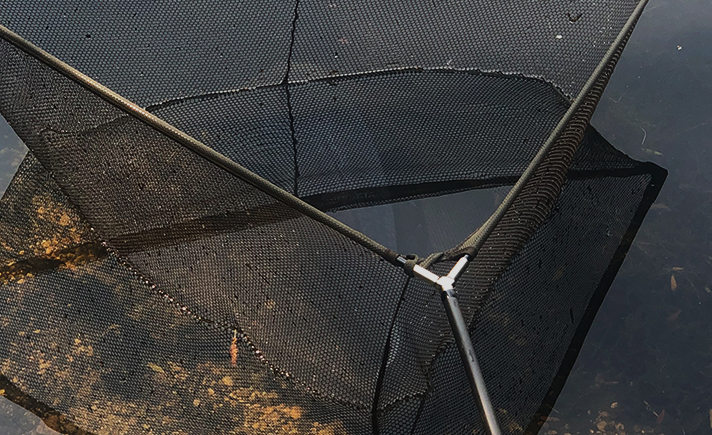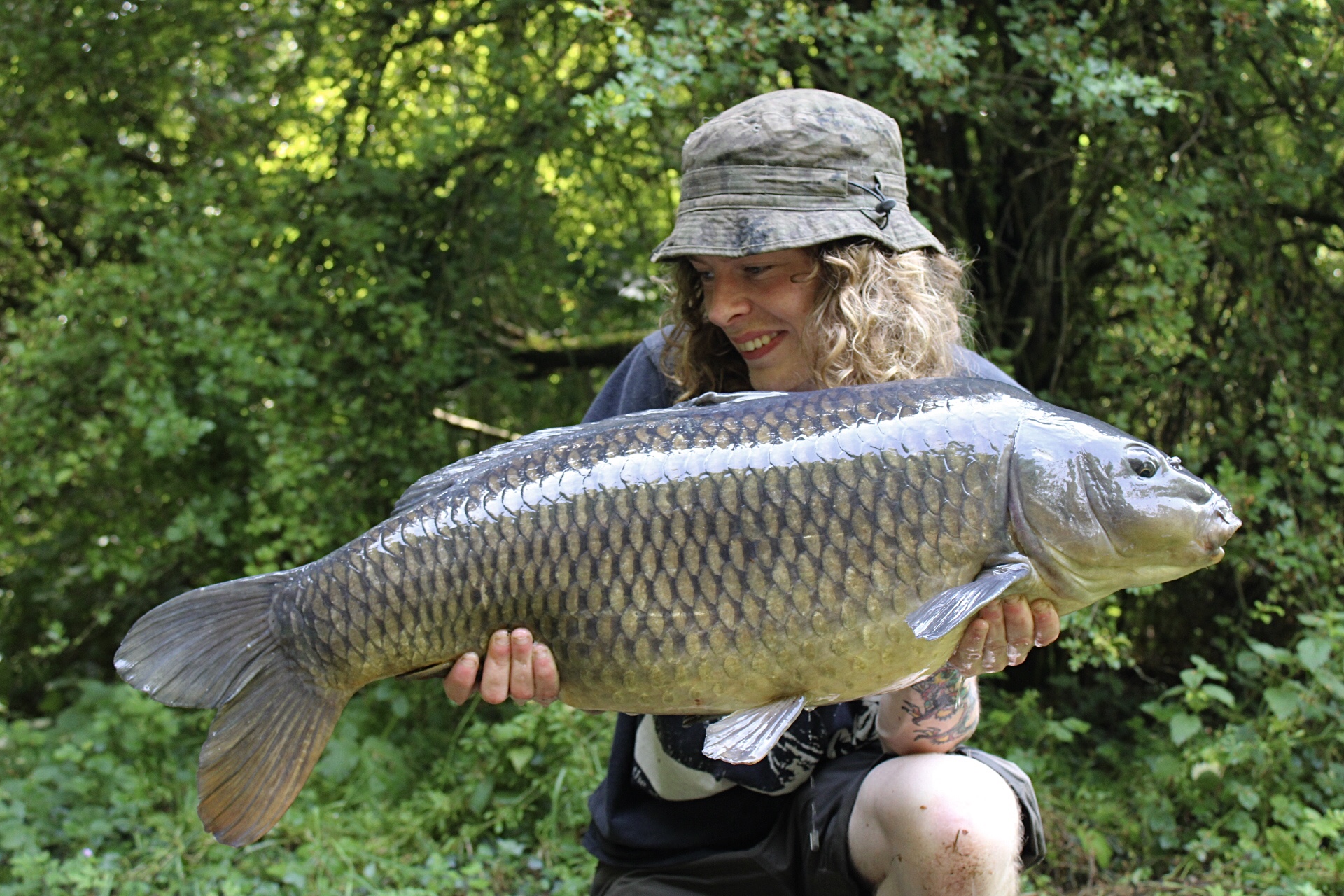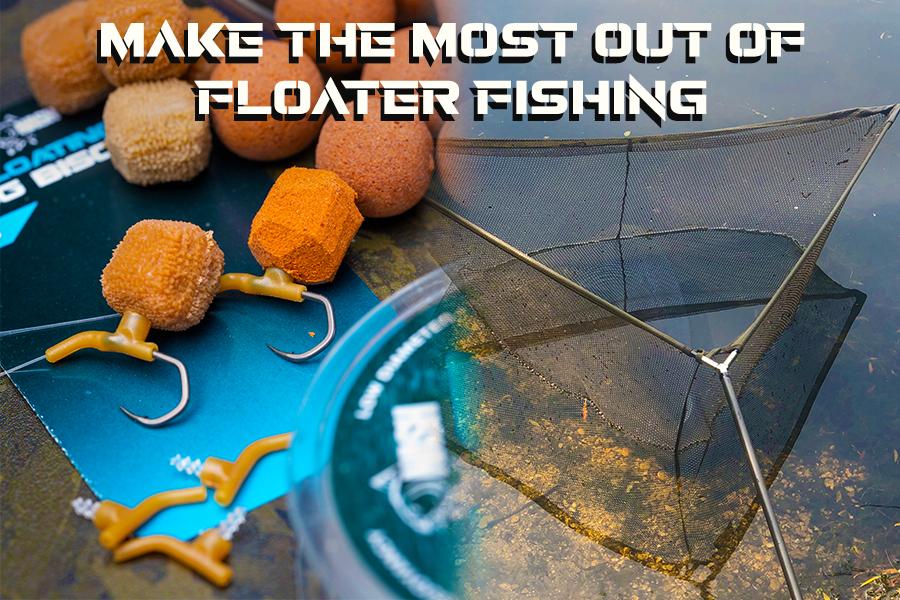Surface Fishing - How to Make the Best Of Your Floater Fishing and Catch More Carp!
Surface fishing is my favourite way of catching a carp. The buzz of watching them break the surface and getting closer to your hook bait always gets my heart racing. Currently we are in prime floater fishing time so here is how I make the most of my surface fishing over summer.
Practice
Take time to practice your surface fishing skills. As soon as the weather gets hot I'll go to a higher stock park lake for a couple of hours in the evening just so I can familiarise myself with the technique again. This means you have room for error and time to familiarise yourself before you start surface fishing for the fish you want to catch.
Act On The Angling Situation
Always think ahead and make something happen if you're not catching. For instance I did a night at Horcott Lakes maybe a month ago. When I woke up it was evident that I was not on the fish. Acting on this I packed everything down and put the majority of my gear in the car before walking around the lake with my surface fishing gear. Within 30 mins I had netted a 28lb common which I had caught at the opposite end of the lake from where I had done that night. It's always worth doing a couple of laps with the surface gear if it's not happening on the bottom!

If you manage to catch a fish and can't get anything going after then take a lap around the lake and see what you can find! With surface fishing you never need a lot of gear making it easier to pack up and have a mooch.
The second you've got a fish in the net, fire out some more bait. This will help keep any carp which haven't spooked in the area meaning you will have a better chance of nicking a bite. Don't worry about putting your rod out for the time being. Get the fish unhooked first then get your rod rigged up again. If there aren't many fish feeding then weigh and get some photos of your fish. There are plenty of fish taking them then get that rod back out there! Make sure you take two landing nets or a retention sling for this situation. If the venue allows you to retain fish then take advantage of that when the carp are still feeding!
Arrive at the venue for a good time also so you can have some time floater fishing before having to get some rods out for the night. During that same trip I hadn't even done a lap of the lake before seeing loads of fish on the surface in one bay so it was a case of getting back to the car and returning with the floater gear. After an hour of getting them feeding confidently I managed a 32lb common in my net. If you make the most of the opportunities which are presented to you then you'll catch more fish.
Surface Tackle
Remember to bring a variety of surface floats. You may be in a situation where you need an 80g float if your fishing at distance. A good all-round size is 30g. I can fish 60yds with these comfortably but can also fish 20yds happily. Tie your hooklinks long as well - if you find that the fish are taking comfortably you can shorten the hooklink. Once you've shortened it however you can't make it longer so it's always good to have a couple spare.
I've been really getting along well with the size 12 floater claw hooks. Every fish I've had with them has been nailed straight in the bottom lip. As well as this I find they balance the Enterprise Intimidation Dog Biscuits. If you find your hookbait is too buoyant you can trim it to get it to match the buoyancy of your loose feed. However cork is simply too buoyant - for this reason I won't use a cork ball for a hook bait as they are a lot more buoyant than any loose feed. To test the buoyancy hold a floater and your rig underwater and let go at the same time. If your hookbait meets the surface before your loose feed then your hookbait is too buoyant.
Make sure you use anti-tangle sleeves over the swivel as well. With a longer hooklink tangles are more likely to happen - an anti tangle sleeve reduces this.
Surface Bait
Bait can be rather important when it comes to floater fishing. There are certain baits you can add which will ensure you are fishing as effectively as possible. You want to use some bigger baits which will match your hookbait and the Nash Slicker Floaters are perfect for this. Nash Riser pellets are brilliant for initially getting those fish feeding, as well. Don't put too much out however as they will end up ignoring the bigger floaters which are identical to your hookbait. Oil additives are a must to add to your mix as well. This creates a slick on the water making it easier to see the fish in your swim as well as your rig.
Key Points
- Floater fishing can always offer a quick opportunity if the conditions are right - just find the fish.
- Get the carp feeding before casting your rig.
- Cast your rig past the spot and slowly reel the rig back to the spot - this creates minimal disturbance.
Hopefully this motivates you to give floater fishing a go. There are certain situations in angling where it definetly catches more fish than any other method.


Blog Written By Rob Taylor
